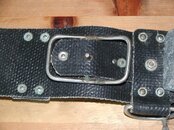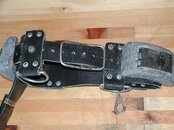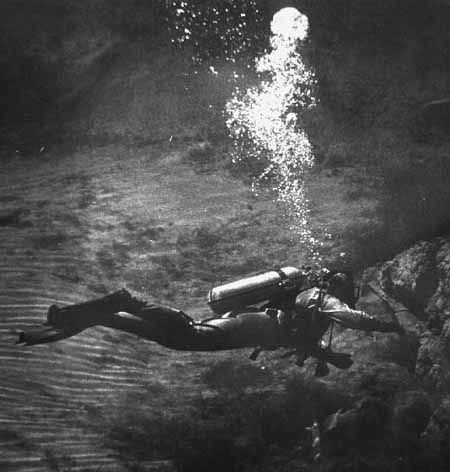Captain
Is it the same page as the Acrobat file in post #17 from the 1963 manual?
It would be interesting if we can determine when the Navy introduced lightweight gear and the Jack Browne (misspelled previously) mask. Wikipedia indicates that Jack Browne was an engineer at DESCO (Diving Equipment and Supply Company). A page on the Desco site says it was developed during World War II, which I just learned. It might not have been approved for the fleet until after the war???
DESCO Masks
I doubt that the Navy would have switched from cotton webbing to leather since the deep sea belts have always been leather. I wonder when wide (4"???) white (presumably cotton) webbing became available? It is all synthetic now and manufactured primarily for truck tie-downs and lifting slings.
A lot of diver-built belts and safety harnesses used to secure umbilicals to were made of conveyor belting by the late 1960s. Metal rivets replaced sewing because petrochemicals in the water would attack threads and cause unexpected failures. I am wearing one in my Avatar and the attached images are of the weightbelt I built at the same time. As I recall, the leather straps on the deep sea weightbelts were held together with copper rivets instead of sewn, but I could have just forgotten.
Jack Browne Diving Mask And Suit - NEDEG 2011 Labor Day Rally - YouTube
Thankfully, by the time I came along the drysuits were gone and we just used wetsuits. I have a Jack Browne in my "old mask stash", which most of us called "Black Death".
Is it the same page as the Acrobat file in post #17 from the 1963 manual?
It would be interesting if we can determine when the Navy introduced lightweight gear and the Jack Browne (misspelled previously) mask. Wikipedia indicates that Jack Browne was an engineer at DESCO (Diving Equipment and Supply Company). A page on the Desco site says it was developed during World War II, which I just learned. It might not have been approved for the fleet until after the war???
DESCO Masks
I doubt that the Navy would have switched from cotton webbing to leather since the deep sea belts have always been leather. I wonder when wide (4"???) white (presumably cotton) webbing became available? It is all synthetic now and manufactured primarily for truck tie-downs and lifting slings.
A lot of diver-built belts and safety harnesses used to secure umbilicals to were made of conveyor belting by the late 1960s. Metal rivets replaced sewing because petrochemicals in the water would attack threads and cause unexpected failures. I am wearing one in my Avatar and the attached images are of the weightbelt I built at the same time. As I recall, the leather straps on the deep sea weightbelts were held together with copper rivets instead of sewn, but I could have just forgotten.
Jack Browne Diving Mask And Suit - NEDEG 2011 Labor Day Rally - YouTube
Thankfully, by the time I came along the drysuits were gone and we just used wetsuits. I have a Jack Browne in my "old mask stash", which most of us called "Black Death".
Attachments
Last edited:






